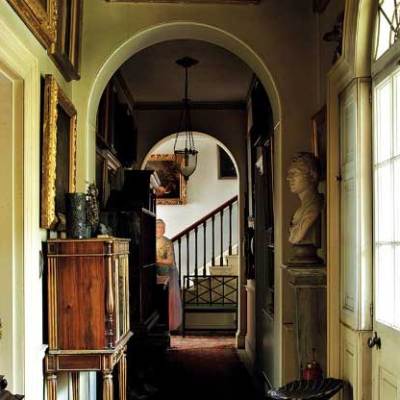Xavier Ribas’s current exhibition at the MACBA, ‘Nitrate’, brings together an extensive body of work produced over the last decade. Comprising photographs, films and archival documents, Ribas explores issues such as colonialism, migration and the exploitation of labour, as well as peripheral spaces such as the outskirts of cities and national frontiers. Together his works form a visually arresting display that blurs the line between the documentary and the aesthetic.
The first part of the exhibition opens with two groups of work Ribas produced between 2002 and 2009. In a series of photographs hung near the gallery’s entrance, Ribas documents the fences and watchtowers that demarcate the borders of the European Union. Displayed in a large grid, these images lend tangible form to topographical divisions usually only ever seen on maps.
Hung nearby is a series of black and white photographs of dry, broken ground with weeds pushing up between the cracks. Seen in isolation, these aestheticised images bring to mind the patterns of natural history. Yet a short accompanying text explains that they document what remains of a site once occupied by gypsies. Intimidated by the police and forced to move on, the camp was subsequently destroyed and surrounded by a concrete wall in order to prevent their return.
As with the other works displayed in this section, which document vacant roadside spaces frequented by prostitutes, for instance, or the social impact of natural disasters, these photographic works highlight the violence and arbitrariness of borders and frontiers, while at the same time offering reflections on the documentary image’s capacity to record and to make sense of the human impact of socioeconomic processes.
Displayed in the second part of the exhibition is a body of work titled Nitrate, which Ribas produced between 2009 and 2014. The works constitute a critical exploration of the system of colonial exploitation led by British companies involved in nitrate extraction in the Chilean Atacama Desert at the beginning of the 20th century. Like the two works described above, they comprise efforts to document social injustices while exploring the limits and ambiguities inherent to the archival document and photographic image.
Perhaps the most enigmatic of these is Three Names Are as Bad as Five. The work is composed of multiple photographic glass plates of the planet Mars taken during an expedition in the Andes in 1907. In each plate several small shimmering discs are suspended against the night sky. The images, displayed in a grid, are accompanied by extracts of field notes written at the time, which vary between the documentary and the poetic. In a particularly striking example, a writer describes these miniature images of Mars as ‘little-round disks, doubt-killing bullets from the planet of war’. In their combination of the astrological, the military and the poetic, these words offer an apt insight into the colonialist imaginary, anticipating the history of violence and oppression that would ensue.
The rest of the exhibition brings together a wide variety of objects and documents relating to nitrate production and its uses. These range from a display of Chilean tobacco pouches dating from the beginning of the century, a visual history of detonations involving nitrates – from early experiments with the explosive substance in the 1900s to its use by the IRA during the London bombings in the 1970s – as well as an examination of the contemporary legacies of the assassination of Chilean nitrate workers in 1907.
‘Nitrate’s historical breadth may be sweeping, covering a period that spans more than a century. Yet one of the strengths of Ribas’s exhibition is that, in spite of its repeated use of grids to display texts, images and archival documents, implying that the material be taken as data, it does not make any claim to comprehensiveness or objectivity. Indeed, whether the material used is historical or modern day, each of the works seems to affirm the status of the document in the very same breath in which it is called into question.
‘Xavier Ribas, Nitrate’ is at the Museu d’Art Contemporani de Barcelona (MACBA) until 12 October.




